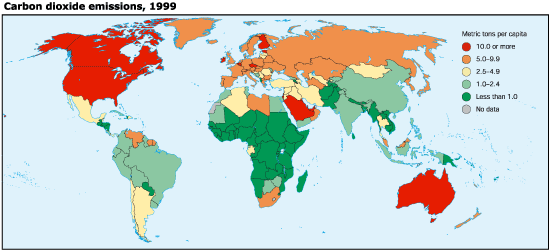
This is a rendering of Poseidon 37, "a floating power plant with the durability of an oil rig and the efficiency to generate up to 50 gigawatt [hours] of hydro and wind power a year"(gizmondo). Although both hydro and wind power are by no means new technologies, the idea of producing energy from multiple renewable sources with one structure is intriguing to me. At 30,000tons and 230 meters wide, Poseidon 37 will roam the seas freely going wherever the winds and currents take it, all the while producing energy with both wind and hydroelectric turbines.
The main challenges we face today with implementing larger-scale renewable energy infrastructure pertains to the huge cost of manufacturing wind turbines, hydroelectric plants, and so on. While power plants such as the Poseidon 37 are by no means inexpensive, the fact that one structure is common to two different types of energy-harnessing turbines points to the conclusion that it will at least be cheaper than installing separate wind farms and hydroelectric plants.
Although a novel idea, I can foresee Poseidon 37 posing many potential problems. A huge underwater hydroelectric turbine roaming the seas can not me good for marine life, and run-ins with land could also be a problem. Regardless of this, the idea of implementing multiple renewable energy production methods into one 'power plant' can prove to be a very valuable innovation.
source:
http://gizmodo.com/5526301/poseidon-37-a-floating-power-plant-for-the-roughest-seas

What is the means of transmission once this energy is produced? This seems like a good idea but I just don't understand how the energy is transported from the middle of the ocean to land.
ReplyDeleteI was wondering the same thing. Also, the idea of these things "roaming free" sounds a little scary. Obviously they would need to be managed very closely. I just read an article today about the first off-shore wind turbine farm that is going to be built in Nantucket Sound off Cape Cod. After years of debate, it looks like it is finally going to happen. If successful (as seen in other countries like Denmark), off-shore wind farms could be a great alternative energy for the future.
ReplyDeleteThis is a really cool concept. But I also don't understand how the energy will be transferred back to the grid on land. Maybe they could use it to power things like oil rigs and cruise ships.
ReplyDeleteI agree with Rob, free roaming expensive machinery doesn't seem very practical. I do however think the idea is great, especially because it overcomes the "not in my backyard" problem with with wind energy.
ReplyDeleteI have the same question of how that energy will be used on land. Nations also claim waterways so a collaborative effort would be required.
ReplyDeleteI also don't get how the energy is transfered back but I am sure the engineers have figured that out so it seems extra amazing that this actually works. If there were a safer way for it to travel around without harming marine life this could a big step for renewable energy.
ReplyDeleteI really like the idea of using multiple green energy techniques on one machine however I think there are more practical ways for this to be done. For example i think that everywhere there is a wind turbine field on land the ground under the turbines should be covered in solar panels. This would reduce cost because less land would be needed and they would both be transmitting power from the same sight so less power lines and power collection stations would be needed.
ReplyDelete